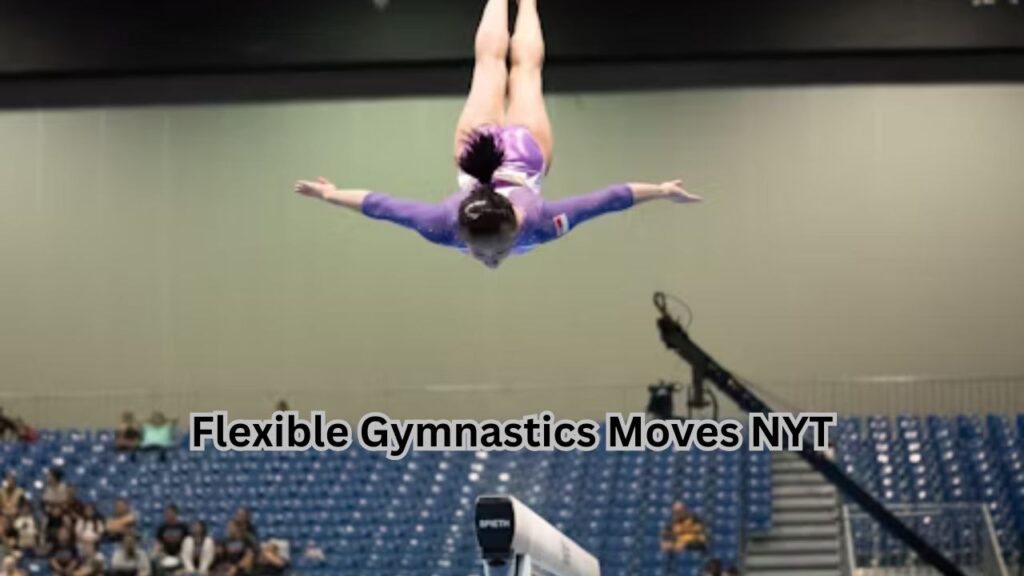Introduction To Flexible Gymnastics Moves NYT
Flexible Gymnastics Moves NYT is a sport that combines strength, agility, and grace. Among its many components, flexible gymnastics moves nyt stand out for their visual appeal and technical difficulty. Recently highlighted by the New York Times, these moves are a testament to the dedication and skill of gymnasts. This article explores the intricacies of flexible gymnastics moves, from the training and technique required to the cultural and competitive significance they hold.
Flexible Gymnastics Move NYT: A Journey of Grace and Strength
The Essence of Flexibility in Gymnastics
Flexibility is a cornerstone of gymnastics, allowing athletes to perform a wide range of movements with ease and precision. The New York Times feature emphasizes the importance of flexibility not only for aesthetic purposes but also for the execution of complex routines that require a combination of strength, control, and grace.
The Evolution of Gymnastics
The sport of gymnastics has evolved significantly over the years, with flexible moves becoming increasingly sophisticated. The NYT article highlights how modern gymnastics incorporates elements from dance, acrobatics, and traditional athletic training to create routines that are both visually stunning and technically challenging.
Also Read : Seth Wadley Ford and Joe Machens Ford: Premier Car Dealerships
Key Flexible Gymnastics Moves
The Splits
The splits are one of the most recognizable flexible moves in gymnastics. They involve extending the legs in opposite directions until they form a straight line, showcasing the gymnast’s flexibility and control. There are three main types of splits:
- Front Splits: One leg extended forward and the other back.
- Side Splits (Middle Splits): Both legs extended sideways.
- Over Splits: Extending one leg beyond the horizontal line, often performed with support.
Backbend and Walkover
Backbends and walkovers are classic gymnastics moves that demonstrate spinal flexibility and strength. A backbend involves arching the back until the hands touch the floor, while a walkover includes transitioning from a backbend into a standing position or vice versa.
Needle Scale
The needle scale is an advanced move where the gymnast lifts one leg behind them to form a straight line with the torso, resembling a needle. This move requires significant flexibility in the back and legs, as well as balance and strength.
Penché
The penché is a move borrowed from ballet, where the gymnast performs a forward bend while lifting one leg high behind them. This move demands exceptional flexibility in the hamstrings and hip flexors, along with impeccable balance.
Training for Flexibility
Stretching Routines
Regular stretching is essential for developing and maintaining flexibility. Effective routines often include:
- Dynamic Stretching: Involves moving parts of the body through a full range of motion, such as leg swings and arm circles.
- Static Stretching: Holding stretches for a period of time to lengthen the muscles, such as hamstring stretches and pike stretches.
- PNF Stretching: Proprioceptive Neuromuscular Facilitation, which combines stretching and contracting muscles to enhance flexibility.
Strength Training
Strength training complements flexibility by ensuring that muscles can support flexible movements. Key exercises include:
- Core Strengthening: Planks, sit-ups, and leg raises to stabilize the body during flexible moves.
- Leg and Back Strengthening: Squats, lunges, and back extensions to support splits and backbends.
Consistency and Patience
Developing flexibility takes time and consistent effort. Gymnasts often spend years refining their flexibility through dedicated training, emphasizing the importance of patience and persistence.
The Role of Flexibility in Gymnastics Routines
Artistic Expression
Flexible moves add a layer of artistic expression to gymnastics routines. They enhance the visual appeal and fluidity of performances, allowing gymnasts to connect movements seamlessly. The New York Times highlights how flexibility can elevate a routine, making it more captivating and memorable.
Technical Execution
Flexibility is crucial for executing many technical elements in Flexible Gymnastics Moves NYT . Moves like the splits, backbends, and penchés require precise alignment and control, which are only possible with a high degree of flexibility. Proper execution of these moves can significantly impact scores in competitions.
Safety and Injury Prevention
Maintaining flexibility can also help prevent injuries by reducing muscle stiffness and improving joint mobility. Regular stretching and strength training ensure that gymnasts’ bodies are prepared for the physical demands of their sport.
Cultural and Competitive Significance
Historical Context
The emphasis on flexibility in gymnastics can be traced back to the sport’s origins. Historically, gymnastics has always valued the combination of strength and flexibility, with routines designed to showcase an athlete’s full range of abilities. The New York Times article notes that this balance has remained a defining feature of the sport.
Modern Competitions
In modern gymnastics competitions, flexibility is a key component of scoring. Judges look for fluid transitions, seamless execution of moves, and the overall aesthetic quality of a routine. Flexible moves often serve as highlight moments that can set a gymnast apart from their competitors.
Cultural Impact
Flexible gymnastics moves have transcended the sport, influencing dance, fitness, and even popular culture. The grace and athleticism displayed in these moves inspire audiences worldwide, contributing to the broader appreciation of physical artistry.
Inspiration and Aspiration
Notable Gymnasts
Several gymnasts are renowned for their exceptional flexibility, serving as inspirations for aspiring athletes. Gymnasts like Nadia Comăneci, Simone Biles, and Aly Raisman have demonstrated the heights that can be achieved through dedication to flexibility and training.
Achieving Personal Goals
For those inspired by the New York Times feature on flexible gymnastics moves, setting personal goals is a great way to start. Whether aiming to master a specific move or improve overall flexibility, the journey requires dedication, proper training, and a positive mindset.
Conclusion
The art of flexible gymnastics moves, as highlighted by the New York Times, showcases the incredible blend of strength, grace, and dedication required in the sport. From the iconic splits to the challenging backbends, these moves are a testament to the gymnasts’ commitment to their craft. By understanding the techniques, training methods, and cultural significance of these moves, we gain a deeper appreciation for the beauty and complexity of gymnastics.
Also Read : https://notipostingt.com/2022/04/26/los-mejores-hoteles-de-lujo-del-mundo-2022: You need to know
FAQs
What are flexible gymnastics moves?
Flexible gymnastics moves are techniques that require a high degree of flexibility, such as splits, backbends, and needle scales.
How do gymnasts develop flexibility?
Gymnasts develop flexibility through regular stretching, strength training, and consistent practice over time.
Why is flexibility important in gymnastics?
Flexibility is crucial for executing complex moves, enhancing the artistic quality of routines, and preventing injuries.
What are some common flexible gymnastics moves?
Common flexible moves include the splits, backbend and walkover, needle scale, and penché.
How does flexibility impact gymnastics competitions?
Flexibility impacts scoring by enhancing the visual appeal and technical execution of routines, making them more fluid and seamless.
Can anyone improve their flexibility for gymnastics?
Yes, with consistent stretching and strength training, most people can improve their flexibility, although it may take time and dedication.



